Each of us may find ourselves in a very unpleasant situation when a sewer pipe suddenly cracks and begins to leak. Perhaps your pipes are still in order, and all connections are absolutely tight, but time moves inexorably forward, communications begin to age and may crack.
You need to be prepared for this incident and know well how and with what to repair a crack in a cast iron sewer pipe. Naturally, you can simply replace the cracked section by installing a new pipe. However, this will require a lot of time and money.
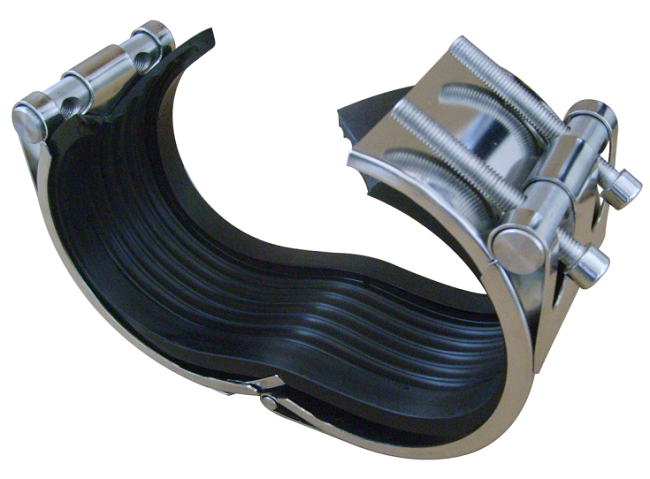
A more complex method of embedding
When a crack reaches a large size, simple repair is not enough. Needs serious renovation.

This work will stop the leak, but the patch will only be able to keep it from leaking for a short period of time. When the crack reaches a large size and the pipe is completely out of order, no amount of restoration work will help. It just needs to be replaced.
Longitudinal cracks
Cast iron pipes sometimes burst, longitudinal cracks appear, and small chips occur. The exhaust riser bursts, a crack appears due to severe icing of the inner diameter of the pipe. According to the laws of physics, a frozen pipe begins to expand. As a result, cracks appear in almost any material.
Even strong steel and thick cast iron cannot resist such expansion. When you can’t feel it in the room, it means the crack is still minimal in size.
Condensation always accumulates in the thinnest area. There is a deceptive impression that it is flowing out of the crack that has formed.
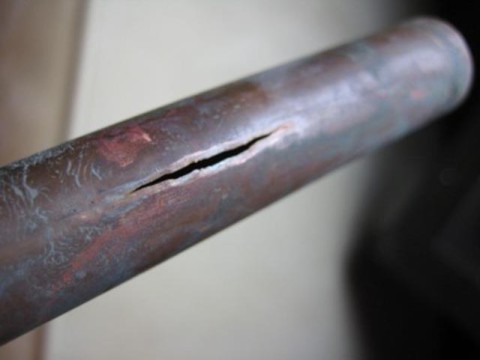
Here you can do without sealing the crack. It just needs to be sealed.
Before starting to seal, the crack is slightly “widened”. Make a small recess into which the sealant will be applied. The crack is degreased and dried well.
To minimize the amount of condensation that appears, it is necessary to insulate the riser both in the attic and in the apartment itself. When an unpleasant odor appears in the apartment, sealing it with a simple sealant will not help. We'll have to use more radical methods. The crack is sealed by so-called cold welding. It is an adhesive similar to epoxy resin. But it's much easier to work with.
It is very easy to cover up the resulting crack with such “cold welding”. Once it has cured, it can be sanded down to create a very nice finish.
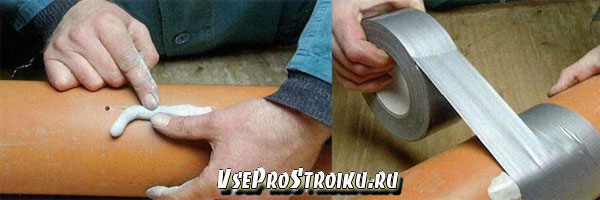 In another method, the pipe is wrapped in two or three layers of gauze impregnated with epoxy resin. You can also wrap the crack with a special rubber bandage and tighten it tightly with copper wire. The more turns of wire, the better.
In another method, the pipe is wrapped in two or three layers of gauze impregnated with epoxy resin. You can also wrap the crack with a special rubber bandage and tighten it tightly with copper wire. The more turns of wire, the better.
You can combine and install a rubber bandage with epoxy gauze. All that remains is to tighten everything well with a steel clamp.
The best way to repair a sewer pipe
 It’s good if there is epoxy resin or cement mortar in the house. However, in most cases, when a pipe leaks, these materials simply cannot be found in the apartment.
It’s good if there is epoxy resin or cement mortar in the house. However, in most cases, when a pipe leaks, these materials simply cannot be found in the apartment.
Special clamps will come to the rescue and quickly stop the leak. This work will take a few minutes.
The pipe needs to be cleaned and dried. The clamp is wrapped around the crack so that the leak is in the center of the clamp. All that remains is to tighten it well. This area needs to be observed for several days; if necessary, the clamp can be tightened.
Sealing tapes
This modern material has appeared quite recently. The tape is intended to create a hermetically sealed connection between sewer pipe joints.
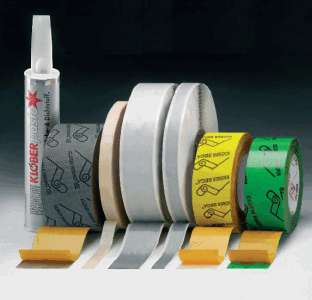 The main advantage of this material is considered to be high efficiency and ease of use. The main component of the sealing tape is polyethylene.
The main advantage of this material is considered to be high efficiency and ease of use. The main component of the sealing tape is polyethylene.
It gives the material high strength and good elasticity. The tape can be used to seal almost any pipe. It can be used when installing plugs and installing bends.
The technology for sealing a joint using tape is performed in the following sequence:
- First, the surface is thoroughly cleaned and dried.
- The joint is covered with tape, wrapping it with constant tension.
A little advice! When applying the tape, care must be taken to avoid creating creases or wrinkles. - The tape should be wound in a spiral. Each subsequent layer should extend to half the width of the previous layer. If the application is done correctly, you will end up with two layers of sealing tape.
- When tape is wrapped around an open area, it should be covered with a protective coating on top. When exposed to ultraviolet radiation, polyethylene film begins to deteriorate. The tape will quickly become unusable. Therefore, a protective coating must be made without fail.
Silicone sealant
Silicone sealant is often used to seal small cracks. The work is performed in the following sequence:
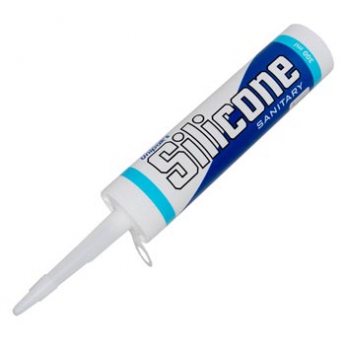
To repair a through hole, use a two-part epoxy. The technology for this work occurs in a different order:
- The repair surface is cleaned and degreased;
- The damaged area is washed with a special bandage made of dense flexible material. The entire length is covered with a small margin. 5–10 revolutions are performed, capturing the previous layer;
- The surface of the tape is coated with epoxy glue.
Why do cracks appear in cast iron pipelines?
When a cast iron pipe begins to leak, it is imperative to determine the cause of the leak. On this basis, a specific repair technology is selected.
First you need to find the place where the crack appeared. Leaks often appear at the junction of pipes or from mechanical influences that cause external defects.
External damage can be caused by a variety of reasons:
- The installation of sewage pipes was done with errors.
- During assembly of the pipeline, the manufacturers did not check its tightness.
- The neighbors connected a grounding wire to the riser. Such actions are prohibited by law.
- Natural pipe wear. Old pipes are useless to repair; they need to be replaced immediately.
A crack that appears at the junction of the fittings indicates poor work done by the plumbers when installing the sewage system.


